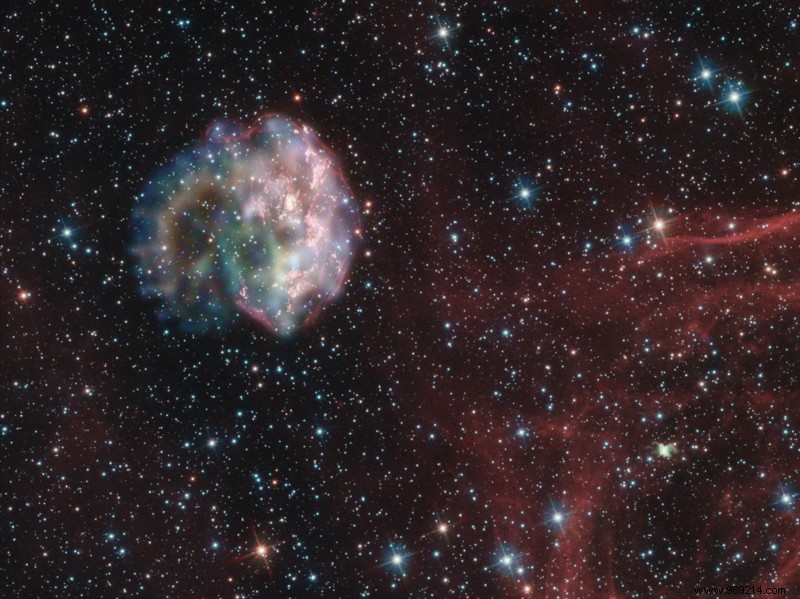The phenomena resulting from the implosion of a star at the end of its life (supernovas) are very violent. The energy that these kinds of events release can therefore have effects on our planet. A recent study looked at traces of supernovae present in tree rings.
The term "supernova" refers to a gigantic stellar explosion accompanied by a brief but incredibly large increase in brightness. In the cosmic neighborhood of the Earth , such an explosion can potentially cause an increase in cosmic rays and therefore, thunderstorms and other forest fires. It can also induce a decrease in the ozone layer, the beginning of an ice age or even an increase in genetic mutations. It could even be a mass extinction.
More modestly, supernovas could also leave traces in tree rings . In order to verify this, researchers from the University of Colorado at Boulder (United States) set out to find this type of trace. In their study published in the International Journal of Astrobiology on November 4, 2020, scientists estimate that over the past 40,000 years, supernovae have caused at least four climate disruptions.
The researchers wanted to study the amount of carbon 14 present in tree rings. It is a radioactive isotope of carbon, formed when cosmic rays continuously bombard our atmosphere. However, as they grow, trees trap some of this carbon-14, as is the case for basic carbon.

As part of their observations, scientists pointed out that at certain periods the concentration of carbon-14 sharply increases in the tree rings. On the other hand, this observation is not accompanied by a link with an earthly event. The researchers therefore formulated two hypotheses. The first evokes the presence of these peaks due to extraordinary solar flares. The second, the one retained by the scientists, implies that a relatively close star exploded in a supernova. This last hypothesis seems more plausible insofar as astronomers have already recorded an incredible production of gamma rays in the past for supernovae occurring outside our galaxy.
US researchers have compiled a list of supernovae that have appeared in the past 40,000 years. They then compared the dates of appearance to tree rings. According to the researchers, the eight closest supernovas seem to be associated with unexplained peaks in carbon-14 levels. They took as an example a star in the constellation of Veils, located 815 light years from Earth. The star in question exploded about 13,000 years ago. Soon after, carbon-14 levels increased by almost 3% on Earth.
However, scientists still have uncertainties, particularly regarding the timing of the explosions. Indeed, it is very difficult to date them precisely, so much so that the researchers evoke a margin of error of 1,500 years regarding the example star. This could therefore call into question their work. They will therefore have to further improve the precision of the measurements in order to fully make the link between supernovae and tree rings.